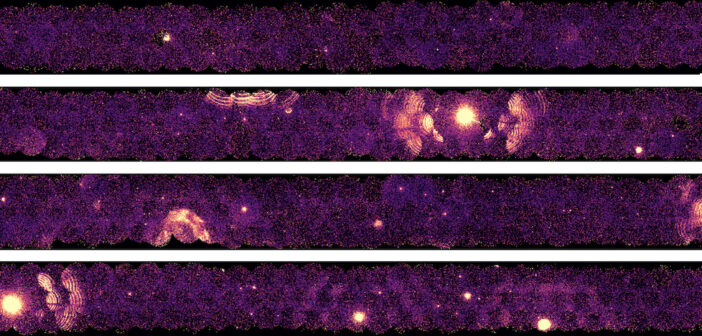
The plane of the Milky Way through the eyes of the Swift Observatory. Click to see a high-resolution version. [O’Connor et al. 2023]
Researchers often discover faint X-ray sources only by chance, when they happen to occupy the same field of view as a bright source under investigation. Recently, as described in a research article led by Brendan O’Connor (Carnegie Mellon University), the team behind the Swift Deep Galactic Plane Survey took a more purposeful approach to finding faint X-ray sources in our galaxy, spending a collective 22 days observing the plane of the Milky Way with the Neil Gehrels Swift Observatory to do just that. Bright galactic X-ray sources tend to be flaring X-ray binaries — neutron stars or black holes that siphon material from a companion star, creating a super-hot accretion disk — and faint X-ray sources are likely cataclysmic variable stars, or magnetars and X-ray binaries in their quiescent state. The images above and to the right give a broad view of the results of the survey, which led to the discovery of 348 previously uncatalogued X-ray sources. The team found many objects near the brightness limit of their survey, suggesting that even more sensitive telescopes are needed to fully understand the X-ray sources in our galaxy. To learn more about the Milky Way’s population of faint X-ray sources, be sure to check out the full article below for more information about the first phase of the Swift Deep Galactic Plane Survey.
Citation
“The Swift Deep Galactic Plane Survey (DGPS) Phase I Catalog,” B. O’Connor et al 2023 ApJS 269 49. doi:10.3847/1538-4365/ad0228


